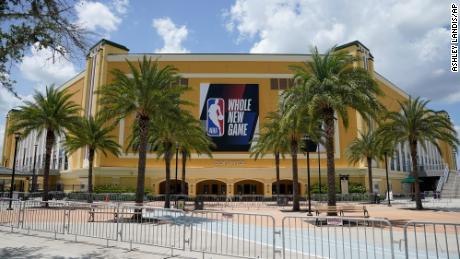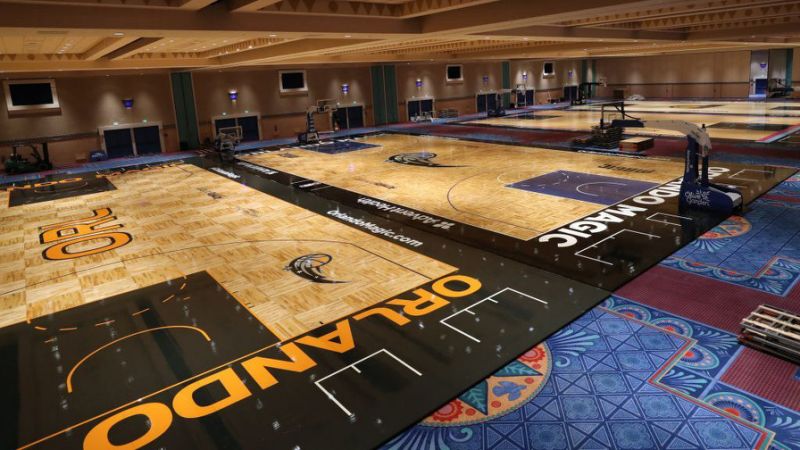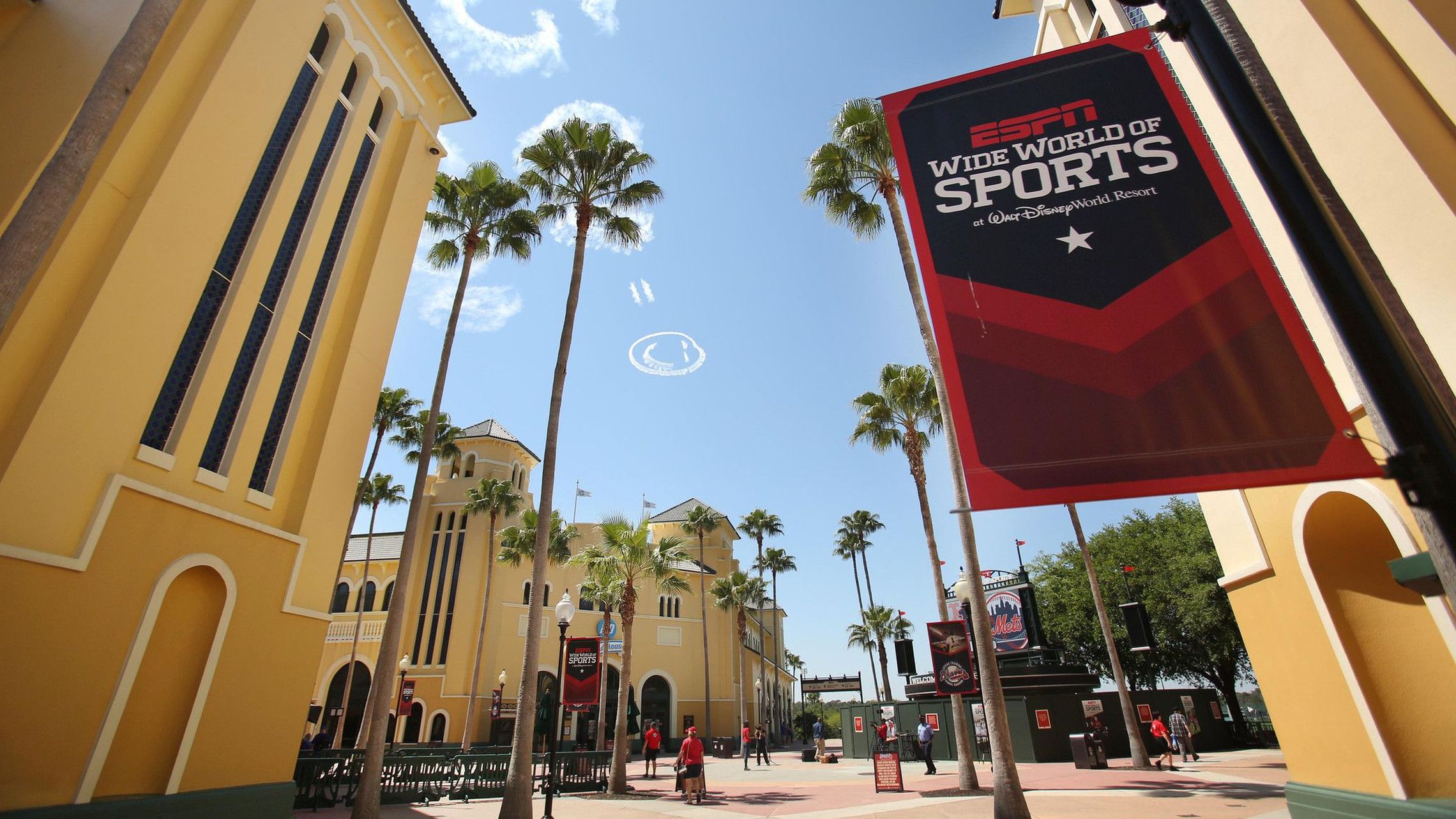
By Kevin Memminger, contributing writer
Photos from CNN and Yahoo Sports
Throughout this year, the United States has struggled to find a solution to contain the spread of COVID-19. With over 8 million cases across the country, there has yet to be a premier stoppage in the spread of this disease. The National Basketball Association, also known as the NBA, was directly affected by the disease and suspended all operations. However, after a 141-day hiatus, the NBA season was resumed through egregious safety rules and regulations.
The NBA was able to combat COVID with remarkable success, and with zero cases since the restart. They did it with millions of dollars, Mickey Mouse, and essentially a really big bubble. When the NBA suspended all basketball operations on March 11, after a positive test from Utah Jazz center Rudy Gobert, the future of the 2019-2020 season looked grim. The immediate focus of the NBA was to cease the spreading of the disease amongst its teams and players. At this time the question that loomed was “what happens next?”
In years prior, the NBA faced the threat of a suspended season due to “lockouts,” which are a work stoppage due to labor dispute. The first major lockout occurred in the 1998-1999 season, spanning 204 days, shortening the season from 82 to 55 games, and costing the NBA more than $1 billion overall. The second was during the 2011-2012 season, spanning 149 days, shortening the season from 82 to 66 games, and costing the NBA around $800 million. Both seasons continued under normalcy after these lockouts.
This stoppage was vastly different. To many, the only outcome that seemed possible was a complete termination of the season. The course of action that the NBA and Commissioner Adam Silver would have to take to resume the 2019-2020 season was monumental and odds-defying. If the NBA was going to restart, they would face several questions, including where they could play, and how they would be able to manage the safety of everyone involved, including players, coaching staff, trainers, etc. The NBA devised a plan.
With the inclusion of Disney CEO Bob Iger and NBPA’s Michele Roberts, the NBA approved a six-phase plan in June that would see 22 teams back in action by July 30. Walt Disney World, located in Orlando, Florida, was also shut down on March 12, 2020 due to COVID-19 concerns. Walt Disney World Resort is colossal, as it is 40 square miles housing four different theme parks, two water parks, and 34 resort hotels amongst other amenities. The NBA deemed ESPN Wide World of Sports Complex, located on the Disney World property, to become the new home of NBA players, coaches, and trainers amongst others for up to three months depending on the competition.
The goal of the “NBA Bubble” was to isolate and quarantine all parties involved, and to minimize any physical contact with the outside world and potential opportunities to contract COVID-19. The bubble restricted friends and guests from attending, as well as a modified restriction on players’ families.

Phase one took place between the dates of June 12-22, in which all players who decided to return to play in Orlando needed to get COVID tests at their home market. Phase two, initiated between June 23-30, stated that players could return to team facilities whilst also getting COVID testing and blood drawn daily. Phase three took place on July 1-7, and this phase allowed for coaches to join their teams and made workouts mandatory for those who were going to travel. Phase four initiated the beginning of the bubble, as teams began to travel from July 7-11.
Upon Florida arrival, the rules that were implemented included “Players and team staff will stay isolated in their rooms. That will be the case until they have two negative COVID-19 tests at least 24 hours apart. It’s optional, but players can wear proximity alarms which will buzz if someone spends more than five seconds within six feet of another human being. For the alarm to work, the other person must also be wearing the alarm. Team and league staff must wear the alarm. It remains to be seen whether referees will have to wear it.” (Hoopsrumors.com).
For phase five, teams would begin to scrimmage other teams based on what hotel the team was located in. Lastly is phase six, which began gameplay, as there were eight “seeding” games before the normal 16 team playoff format, resulting in an NBA Finals Series. The NBA Finals occurred with the Los Angeles Lakers prevailing as the 2019-2020 Champions. Social distancing and masks were enforced throughout the bubble. Adam Silver confirmed that there were zero positive tests amongst those players, coaches, and staffers.
The shift to Orlando cost the NBA over $150 million. This included different services that were provided, such as the chefs that were brought in, the barbers, transportation, and masseuses amongst others. The NBA treated those on location in the bubble with the highest ordinance of luxury, doing their best to make a tough situation more manageable. The NBA was able to format this bubble and finish the rest of its season healthy and successful.

I asked several McKendree student-athletes if they could handle some challenges of the bubble in their particular sports. The first interview question that was posed was, “Have you taken a COVID test? If yes, would you be okay with taking one daily?” Question two was, “As an athlete, do you think that you would be able to isolate yourself from friends and family for 3 months for your sport?” The first athlete was Larry Davis III, a junior, who plays football for the Mckendree Bearcats.
Davis’s response to the first question was “I have taken a COVID test and I would be okay with taking a test daily. I’ve learned to get used to the test.” The second question presented more of a challenge for Davis, “As an athlete I want to be able to say I can isolate myself for my sport, but because of the person I know I am I would not be able to isolate myself for that long. I’m the kind of person that needs to be around friends or family in person for me to function mentally.”
The second athlete was Morgan Sterrett, who is a junior as well. Sterrett is on the women’s volleyball team at McKendree. Sterrett responded to the first question with ease. “Yes, and yes I would take one daily. It’s uncomfortable, but it’s not terrible.” Sterrett answered the second question with gleaming dedication. “I would hate to isolate for three months, but I would definitely do it in order to play.”
The last athlete was Aleksandar Davitkov, a sophomore who plays basketball here at McKendree. Davitkov’s response to the first question was “I took a test because basketball tests weekly and I am fine with it as long as the school is organized, but one daily is too much.” Davitkov, a non-US resident, stated that being at McKendree is very similar to being in the bubble when it comes to his family and friends. He answered question three. “Yes I would, since I am already isolated from them already being here for 9 months, but it’s all fine though.”
What Adam Silver and the NBA did this past season was simply remarkable, yet unrealistic for all levels.The option of playing in a bubble type environment is unimaginable for most collegiate level sports due to the restrictions and finances that are implied.
[…] Balling In A Bubble – The McKendree Review […]